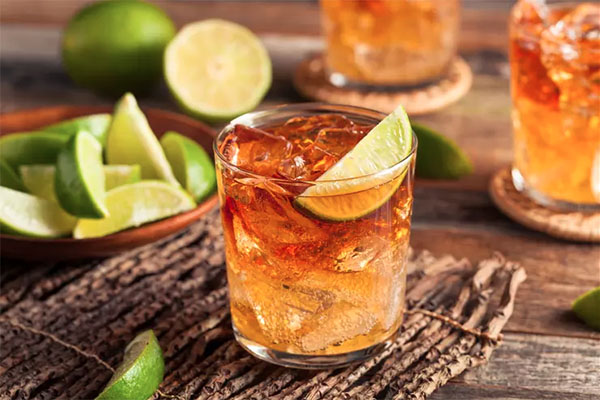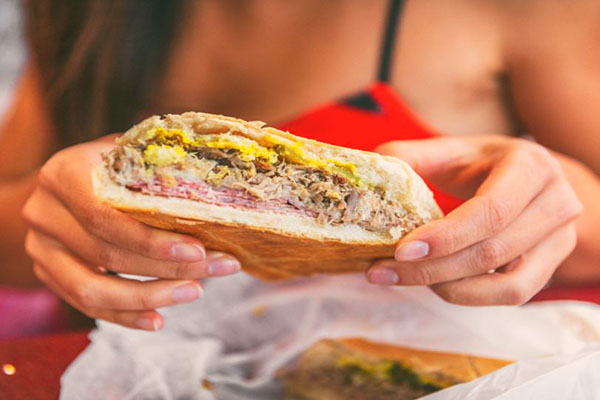Food and Drink in Cuba
Food and drink in Cuba
Delicious food and drink
Cuban food may not have a fantastic international reputation, in the same way that Mexican or even Jamaican cuisine does, however we think it’s time that this changed! The country’s national dishes may not be well known outside of the country, but that’s not to say they are not delicious, with food and drink in Cuba lovingly-prepared and high in quality.



What to expect from food and drink in Cuba
Black beans and rice are staple ingredients when it comes to food and drink in Cuba, and act as the basis around many meat and vegetarian dishes. They can be cooked together as moros y cristianos, or separately as arroz con frijoles. When it comes to meat, the most commonly available are chicken and pork, while having almost 6000 km of coastline ensures that fresh fish and seafood are also frequent additions to paladares (privately-owned restaurants) and hotel menus. To some, Cuban cuisine can appear a little bland, with few spices used in dishes. If you like a little heat, consider bringing a small bottle of hot sauce with you to Cuba. Fruit and vegetables remain largely seasonal in nature, with the vast majority of such produce still grown on farms and small allotments on the island itself. As you might expect from Cuba’s Caribbean location, tropical fruits abound, with mangoes, pineapples, coconuts, and banana each taking their turn on the calendar among many others. When it comes to vegetables, cucumber, tomato and cabbage are must have items in a Cuban salad, while potatoes, sweet potatoes, breadfruit, and sweetcorn are all easy to come across. Omelettes, served with fresh bread, fruit, and strong local coffee are a popular choice for breakfasts. Lunches are dominated by the mixto, or Cuban sandwich, deeply filled with pork, ham, cheese, pickles, and mustard. A grilled panini-like version is known as a plancha. Portions at any time of day are large, so you may not want three full meals each day!
Being vegetarian in Cuba
It’s fair to say that vegetarianism hasn’t yet made any significant inroads with Cuba’s general population, with many believing that eating meat is something of a status symbol. However, it’s no longer particularly difficult to find vegetarian dishes on restaurant menus, and casa particular owners who offer optional meals are also generally aware of a vegetarian’s meat-free status. The greatest difficulty you’ll encounter today, as a vegetarian visiting Cuba is the relative lack of variety of meals on offer – limited to rice and beans, omelettes, and salads. Vegetarian meals aren’t much of a budget option either, as they are elsewhere in the world, costing around the same amount as dishes containing meat, as a result of the price of vegetables in the local markets.
Being gluten free in Cuba
If you suffer from celiac disease and need to avoid gluten, then the good news is that the food and drink in Cuba is relatively easy to navigate due to the fact that much of it is unprocessed and made from scratch, while the staples of rice and beans are naturally free of gluten. Opting to stay and eat at a casa particular, rather than a hotel, makes the process even easier, since you can provide your host family with a list of ingredients that should be avoided. At present, gluten-free bread doesn’t feature on the island, so you will either need to avoid bread entirely during your stay, or go to the effort of bringing some long-life bread with you from home. Likewise, the only pasta you’ll encounter at present is the standard variety made from wheat, which rules this out as an alternative meal choice. Should you remain worried about what you might find when it comes to gluten-free food and drink in Cuba, it might be worth your while bringing some snacks you enjoy from home, such as nuts, dried fruit, or protein bars, which are easy to transport and have long shelf lives even in the Cuban heat. Avoid potential issues at customs on arrival into the country by bringing pre-packed snacks whenever possible, rather than those you have packaged yourself.
Popular dishes to try in Cuba
Comida criolla is a great introduction to food and drink in Cuba. This dish is a sort of buffet on a plate, comprising a mixture of staples including meat or fish, rice, black beans, delicious fried plantain, a little salad, and often (a little strangely) some potato chips. It may not be much to look at, but its hearty, and very welcome after a day’s sightseeing. Meat lovers will adore ropa vieja, consisting of braised skirt beef steak stewed in a tasty tomato sauce until it falls apart under a fork. Vaca frita sees the same cut of meat braised with a blend of herbs and spices until it’s tender. It’s usually served with a zesty onion and pepper mix, infused with lemon, alongside the ubiquitous white rice. Tamales, the steamed filled wraps, are popular from the street to the high-end restaurants. The outer dough is made from ground corn (making them safe for those with celiac), packed with tasty fillings, and wrapped in leaves before being baked. While some diners then scrap out the middle and discard the dough, this seems like sacrilege to us! For those who like a bit of spice in their life, look out for devilled crab, a favourite with Cuban exiles in Florida which has made it back to the island of their birth. It mixes fried blue crab meat with a spicy enchilada sauce.
Drinks you must try while in Cuba
As well as the coffee, Cuba is also known for its rum, produced from sugar grown on the island. It acts as the main ingredient in many of the island’s favourite cocktails, including the mojito, daiquiri, and Cuba Libre (also known as the Cubata). Lager beers are also an integral part of life on the island, with some surprisingly refreshing home-produced brands (Cristal, Bucanero). If you don’t drink alcohol, there’s no need to miss out, with a ready supply of fresh fruit juices near at hand.